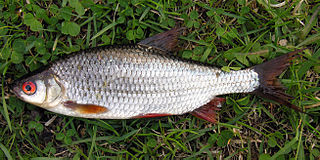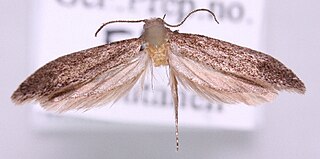
Continental Europe or mainland Europe is the contiguous continent of Europe, excluding its surrounding islands. It can also be referred to ambiguously as the European continent, – which can conversely mean the whole of Europe – and, by some, simply as the Continent. When Eurasia is regarded as a single continent, Europe is treated as a subcontinent, and called as European subcontinent.

Scandinavia is a subregion in Northern Europe, with strong historical, cultural, and linguistic ties between its constituent peoples. In English usage, Scandinavia most commonly refers to Denmark, Norway, and Sweden. It can sometimes also refer more narrowly to the Scandinavian Peninsula, or more broadly to include Finland, Iceland, and the Faroe Islands.

The Scandinavian Peninsula is a peninsula located in Northern Europe, which roughly comprises the mainlands of Sweden, Norway and the northwestern area of Finland.

In geography, the temperate climates of Earth occur in the middle latitudes, which span between the tropics and the polar regions of Earth. These zones generally have wider temperature ranges throughout the year and more distinct seasonal changes compared to tropical climates, where such variations are often small and usually only have precipitation changes.

Norway is a country located in Northern Europe in the northern and western parts of the Scandinavian Peninsula. The majority of the country borders water, including the Skagerrak inlet to the south, the North Sea to the southwest, the North Atlantic Ocean to the west, and the Barents Sea to the north. It has a land border with Sweden to the east and a shorter border with Finland and an even shorter border with Russia to the northeast.

An ibex is any of several species of wild goat , distinguished by the male's large recurved horns, which are transversely ridged in front. Ibex are found in Eurasia, North Africa and East Africa. The name ibex comes from Latin, borrowed from Iberian or Aquitanian, akin to Old Spanish bezerro "bull", modern Spanish becerro "yearling". Ranging in height from 70 to 110 centimetres (27–43 in) and weighing 90 to 120 kilograms (200–270 lb), ibex can live 20 years. Two closely related varieties of goats found in the wild are not usually called ibex: the markhor and the feral goat.

Gervais's beaked whale, sometimes known as the Antillean beaked whale, Gulf Stream beaked whale, or European beaked whale is the most frequently stranding type of mesoplodont whale off the coast of North America. It has also stranded off South America and Africa.

The Bruce Peninsula is a peninsula in Ontario, Canada, that divides Georgian Bay of Lake Huron from the lake's main basin. The peninsula extends roughly northwestwards from the rest of Southwestern Ontario, pointing towards Manitoulin Island, with which it forms the widest strait joining Georgian Bay to the rest of Lake Huron. The Bruce Peninsula contains part of the geological formation known as the Niagara Escarpment.
Wirral, also known as The Wirral, is a peninsula in North West England. The roughly rectangular peninsula is about 15 miles (24 km) long and 7 miles (11 km) wide and is bounded by the River Dee to the west that forms a boundary with Wales, the River Mersey to the east, and the Irish Sea to the north.

The oriental cockroach, also known as the waterbug or black cockroaches, is a large species of cockroach, adult males being 18–29 mm (0.71–1.14 in) and adult females being 20–27 mm (0.79–1.06 in). It is dark brown or black in color and has a glossy body. The female has a somewhat different appearance from the male, appearing to be wingless at a casual glance, but is brachypterous, having non-functional wings just below her head. She has a wider body than the male. The male has long wings, which cover three quarters of the abdomen and are brown in color, and has a narrower body. Both of them are flightless. The female oriental cockroach looks somewhat similar to the Florida woods cockroach and may be mistaken for it. Originally endemic to the Crimean Peninsula and the region around the Black Sea and the Caspian Sea, its distribution is now cosmopolitan.

The purple hairstreak is a butterfly in the family Lycaenidae distributed throughout much of Europe, North Africa, Anatolia, Caucasia, and Transcaucasia. The larva feeds on Quercus robur, Quercus petraea, Quercus cerris and Quercus ilex.

The lesser horseshoe bat is a type of small European and North African insectivorous bat, related to its larger cousin, the greater horseshoe bat. As with all horseshoe bats, the species gets its name from its distinctive horseshoe-shaped noseleaf.

The roach, or rutilus roach, also known as the common roach, is a fresh- and brackish-water fish of the family Cyprinidae, native to most of Europe and western Asia. Fish called roach can be any species of the genera Rutilus and Hesperoleucus, depending on locality. The plural of the term is also roach.

The Chironomidae comprise a family of nematoceran flies with a global distribution. They are closely related to the Ceratopogonidae, Simuliidae, and Thaumaleidae. Many species superficially resemble mosquitoes, but they lack the wing scales and elongated mouthparts of the Culicidae.

Hemigrapsus sanguineus, the Japanese shore crab or Asian shore crab, is a species of crab from East Asia. It has been introduced to several other regions, and is now an invasive species in North America and Europe. It was introduced to these regions by ships from Asia emptying their ballast tanks in coastal waters.

The grey long-eared bat is a fairly large European bat. It has distinctive ears, long and with a distinctive fold. It hunts above woodland, often by day, and mostly for moths. In captivity, it has also been recorded to eat small lizards. It is extremely similar to the more common brown long-eared bat, and was only distinguished in the 1960s, but has a paler belly.

The ornate shrew is a species of mammal in the family Soricidae (shrews). It is endemic to western North America, ranging from Northern California in the United States to Baja California in Mexico. Eight subspecies are known, including the extinct tule shrew, known only from four specimens collected in 1905, and the Suisun ornate shrew, a species of conservation concern in California. Through skull morphology research and genetic testing on Ornate shrew populations, it has been shown that there are three main genetic subdivisions: The Southern, Central and Northern. These three genetic subdivisions of Ornate shrew arose from populations of Ornate shrews getting geographically isolated from other populations.

Elatobia fuliginosella is a moth of the family Tineidae. It was described by Friederike Lienig and Philipp Christoph Zeller in 1846. It is found in almost all of Europe, except Ireland, Great Britain, Portugal, the Benelux, Denmark and parts of the Balkan Peninsula, eastwards up to European Russia; in North Africa known from Morocco and Tunisia, eastwards through Siberia up to Mongolia.
Chironomus riparius, also known as Chironomus thummi and commonly known as the harlequin fly, is a species of non-biting midge. Their larvae are known by the common name of blood worm due to their red colouration. It is common in both North America and Europe. The species was described in 1804 by Johann Wilhelm Meigen. C. riparius has been used extensively as a model for genome structure analysis in insects and is also used in toxicology tests and functional developmental genetic studies. Both their adult and larval forms have been implicated as disease vectors but are also an important part of freshwater food chains.
Chironomus annularius is a species of non-biting midge in the family Chironomidae. It is usually found in regions with bodies of fresh water but can be found in almost every environment. It tends to form "hotspots" around specific areas. The species is distinguished by the size of its chromosomes and the lack of a proboscis.

















